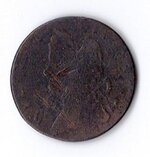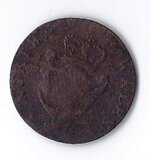Pull_tab_mike
Full Member
- Nov 20, 2009
- 157
- 0
- Detector(s) used
- ACE 250, Tesoro Cibola, Garrett Pro-Pointer, Whites CoinMaster
hello folks, me and my uncle where going through his coin collection that he started when he was little, he does not recall ever seeing this coin in his chest and does not know where he got it. I'm have a heck of a time getting any coin dealers to help me ID it.
so I'm asking for help of Tnet members to Id this thing
Happy New Year
PTM
P.S i also have another question to what a coin may be under the forum COINS, (Old Coin)
so I'm asking for help of Tnet members to Id this thing
Happy New Year
PTM
P.S i also have another question to what a coin may be under the forum COINS, (Old Coin)




 yet
yet




